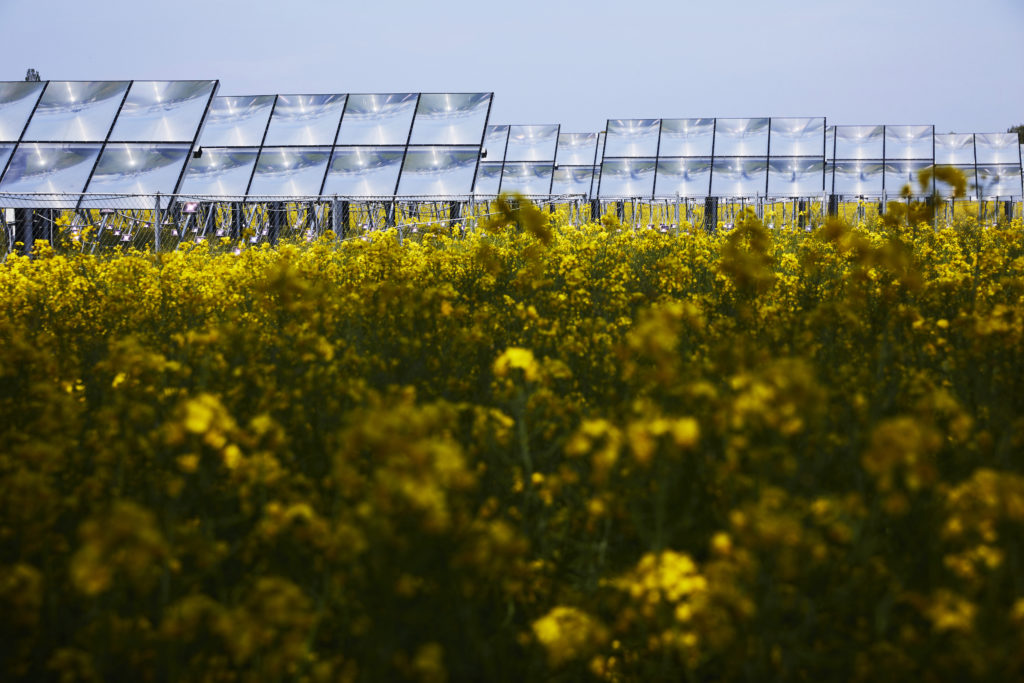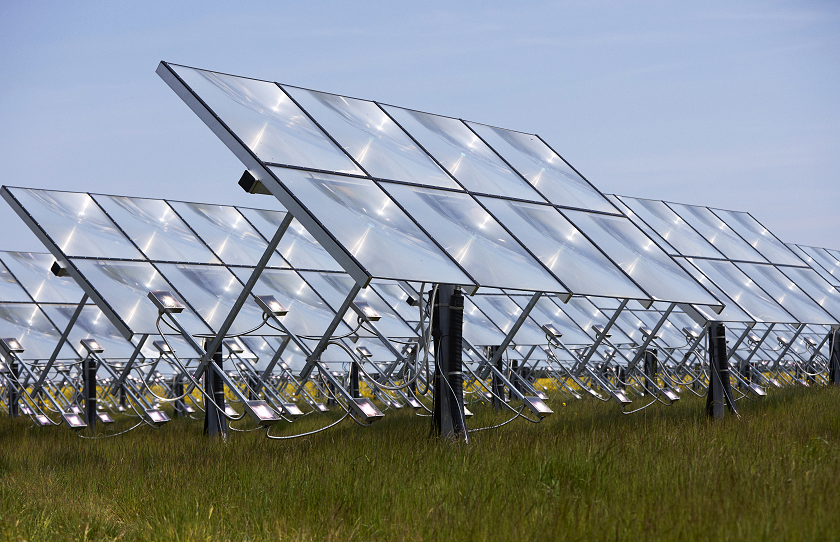Traditional methods of generating heat are heavily polluting our planet. With natural gas and other fossil fuels being burned around the world, countries are seeking more efficient and less damaging methods of generating the same heat. Heliac believes it is offering a solution to this problem.
The issue with producing heat efficiently without polluting our planet revolves around energy density. Energy density is the amount of energy stored in a given system or region of space per unit volume. The challenge is uncovering a method of heat production via renewable resources that can produce the same amount of energy as fossil fuels. Based in Denmark, Heliac has created solar panels that generate heat using lenses that focus sunlight exactly like magnifying glasses. This solution could magnify our potential for reducing the world’s carbon footprint. So, how does it work?
A Magnifying Solar Panel Solution

When we spoke with Jakob Steen Jensen, CCO of Heliac at the World Energy Congress in Abu Dhabi, he explained how his startup’s solution could solve a rather costly problem: “The problem is that if you want to produce heat at above 120 degrees, there’s no way to do it with renewables today. There’s one way where you use very large, expensive mirrors – but that’s way too expensive compared to natural gas fossil fuels in general. So we’re offering the first way to produce heat at these temperatures with renewables at a cost below natural gas anywhere in the world.”
Heliac’s solar panels are fitted with a liquid running through a series of receivers. Controlling the flow-rate of the liquid allows the startup to control the temperature level within. The heat that is generated is then transferred to the end-use location by directing the fluid through a standard heat exchanger.
The solar fields that Heliac has created are similar to any other you may have seen – because they are. The startup’s solution operates with the same principles as concentrated solar power (CSP), something which has been proven for decades. However, the solar panels that Heliac employs are flat. Not only does this make them cheaper than the standard curved mirrors used in traditional CSP, but it also allows them to generate heat more efficiently.
All of the panels that Heliac connects on a solar farm can then be used to deliver the required amount of electricity. With this completed the startup can generate heat for a variety of applications. Heliac began in 2014 with the desire to produce utility-scale solar-generated heat at a price far below that of natural gas. It has since succeeded in creating that vision with one solar field operational in Denmark.
How Heliac’s Solution Can Be Applied

Heliac’s solar panels can generate heat up to and above 350°C. Prior to this, you could only generate this kind of heat with natural gas. With this generated heat, the startup can deliver heat to millions of households around the world. At the moment, Heliac’s first full-scale installation is a solar field generating heat for a district heating facility owned and operated by E.ON in Denmark.
The startup’s solution can also be applied to industries. 12% of global energy is consumed by industrial processes below 400⁰C, including food and beverages, textiles, plastics, pharmaceuticals and more. Heliac estimates that the cost for running these processes is likely around €300 billion. The startup maintains that its solution could generate the same heat in most cases for half the cost. No small claim. The heat generated can also be applied to power production, enabling turbines to generate electricity. This means that Heliac’s solution could also be applied in the same manner as traditional solar energy generation.
Finally, the company states that its solar panel solution can be used in desalination, a process that takes away mineral components from saline water. This would mean that sunny regions where a lack of potable water is a problem could benefit from this solution also.
With one solar field operational in Denmark, Heliac hopes to rigorously analyse the data from that project to see how its solution could be better implemented in other countries. This will also allow Jakob Steen Jensen and his co-workers to examine just how scalable this solution really is.


